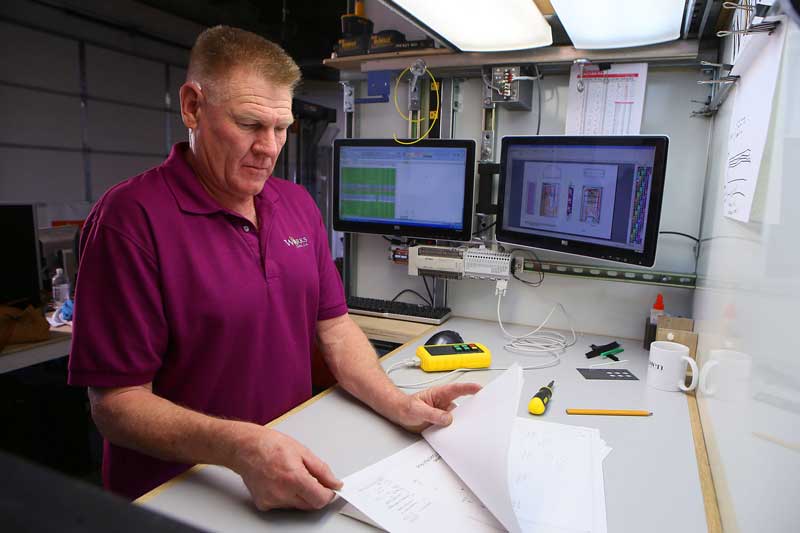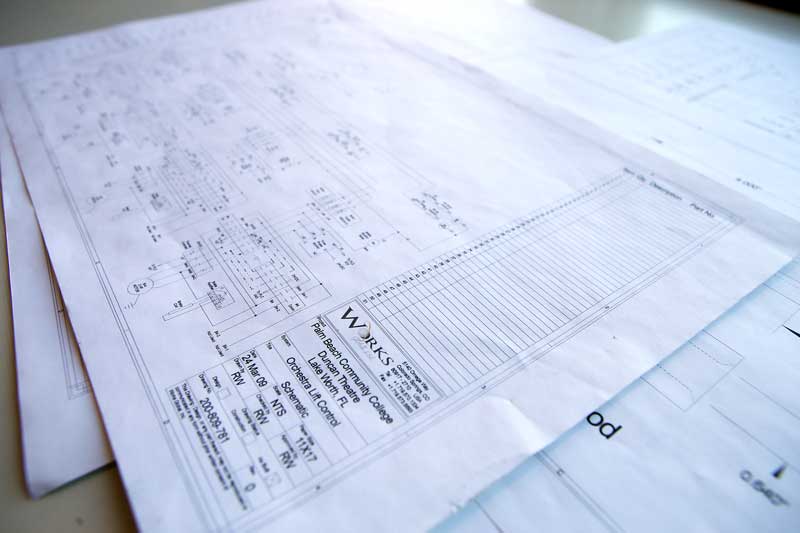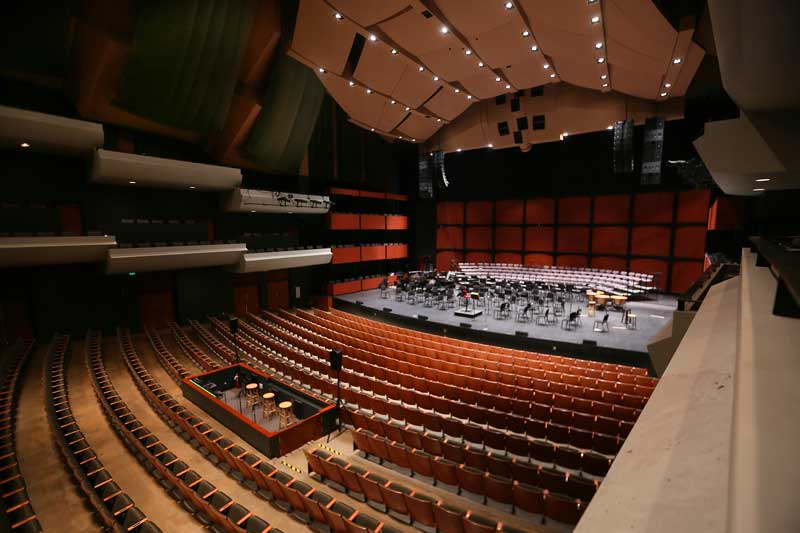Control System Design
A control system is the interface between an operator and a machine. It takes all components of a complete system whether electrical, mechanical or hydraulic and allows them to work cohesively together to achieve a desired logical result.
As control systems for theatrical use differ, be it for over-stage motorized rigging or a moveable acoustical ceiling or for under-stage lifts, each system is designed for the specific requirements that pertain to that piece of equipment and its desired outcome. The individual capabilities for each are dependent on the design.
What is involved in designing a control system?
- Identify what equipment the system must control
- Identify the desired outcome
- Identify the safety concerns to protect life and limb and equipment
- Identify the physical control components required, e.g. relays, fuses, motor, contactors, Programmable Logic Controller (PLC), power supplies
- Design the interface (the part used by the operator to execute an action), e.g. a hand-held controller
- Create the logic so that the arrangement of elements are configured for the desired task
- Finalize design and create documentation e.g., user manual, schematics

What are the benefits of a control system designed by Works Global?
Safety
A Works Global control system has the ability to incorporate many different safety devices e.g., magnetic door locks, load sensors, safe edge protection system, audible alarms to detect lift movement and more.
Hand-held controllers operate safety critical systems. Therefore, they are hard wired to prevent any unauthorized operation of the equipment.
Hand-held Controller
A lightweight transportable controller serves as the primary diagnostic panel. It is enclosed in a protective boot with an average cord length of 25’ allowing the operator freedom of movement and the ability to activate lift functions and readily observe diagnostic indicators.
Diagnostic Capability
Hand-Held Controllers can identify any condition that prevents the equipment from operating and displays the probable cause on the diagnostic display panel.
Durability
Control panels are designed in a methodical and organized manner using industrial grade components for longevity and reliability.
User Friendly
Functions and features are identified in straightforward language compatible with its intended user’s ability to successfully execute commands.



